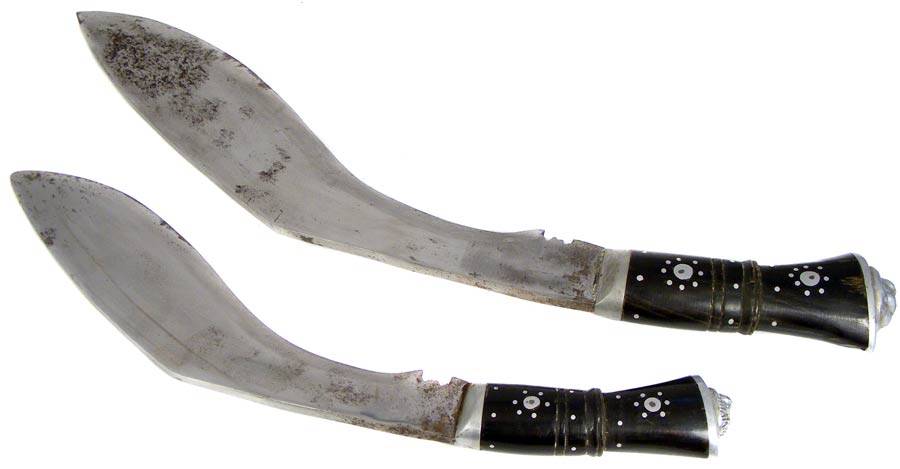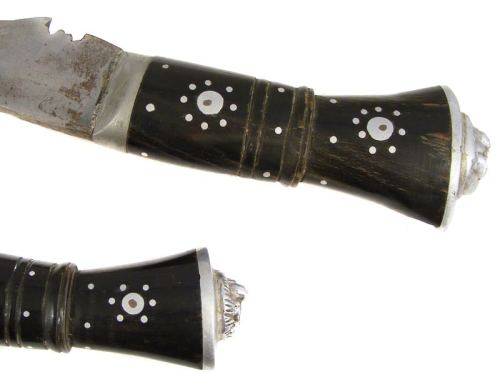PAIR OF NEPALESE KUKRI DAGGERS/KNIVES
The kukri (alternatively spelled khukri or khukuri) is a curved Nepalese knife, used as both a tool and as a weapon.
It is a traditional weapon for Nepalese people, and also a weapon of choice/side arm for all Nepalese, including those serving in different armies around the world.

It is unknown exactly how old these kukris are, by whom or where they were made. Judging by the condition of the blades and scabbards, they look fairly old and match those used by Nepalese soldiers serving in the British Special Forces during the second world war. There are no markings on them that we can see, so we are unable to verify this, so please do your own research before buying. We will describe them as best as possible.
All questions are welcome and will be answered to the best of our ability.

Both Kukris were obviously hand made. They have polished carbon steel blades with a bit of superficial rust that can easily be removed if desired.
The handles were carved from a dark hardwood and feature metal inlays and a lion's head at the end.
The blades are not very sharp, but can easily be given an edge.
It would appear as if they were made in the "full tang" method. A small piece of the tang protruding from the handle has been hammered flat, apparently to secure the blade to the hilt.
There is a notch at the base of each blade (representing the teats of a cow, a reminder that the kukri should not be used to kill a cow, an animal revered and worshipped as goddess throughout Nepal).
The scabbards are leather bound with steel tips. They have the extra pockets for the smaller knife and sharpener, but these are not included.
The faint pattern on the scabbards as well as the pattern of the handle inlays match the pattern of those used by soldiers as described above.

Measured straight across from blade tip to handle end, the largest one measures 39cm and the smaller one 31cm.
The balancing point of both kukris is in the centre of the inward curve.

Please ensure that the description is read carefully and that the images are studied as part of the description.
We are not experts on the subject and can only describe the item as best as we can.
Please do your own research on the items and ask questions if unsure of anything!








